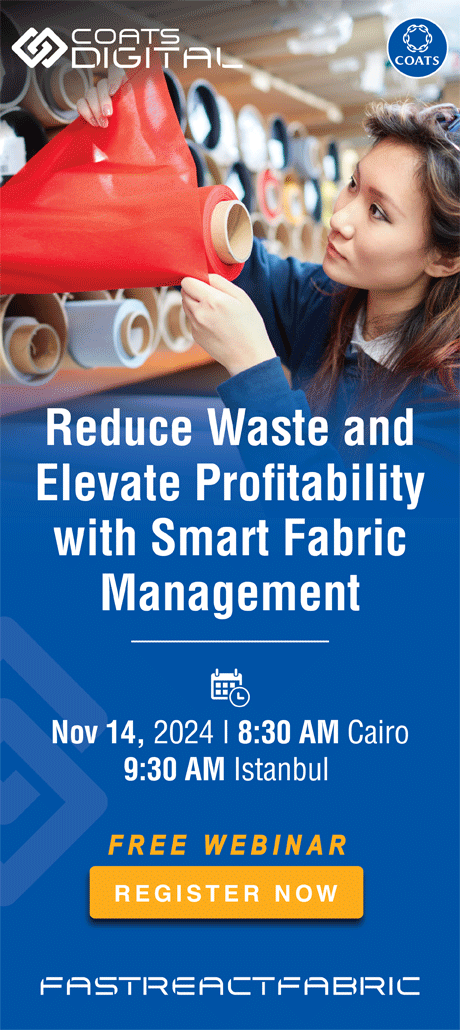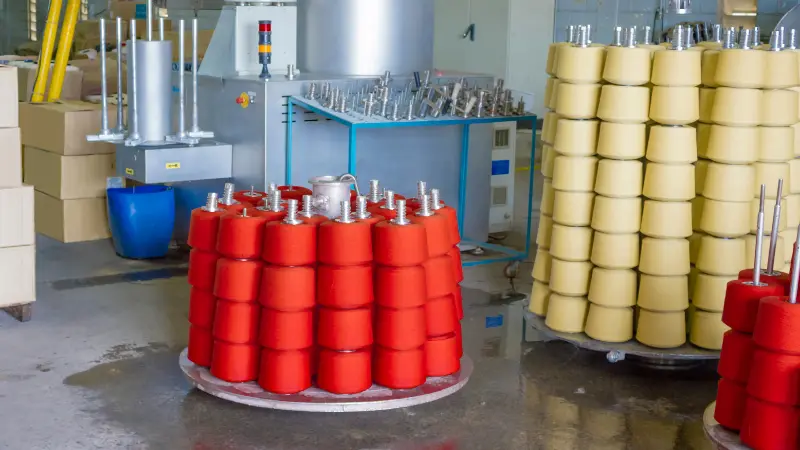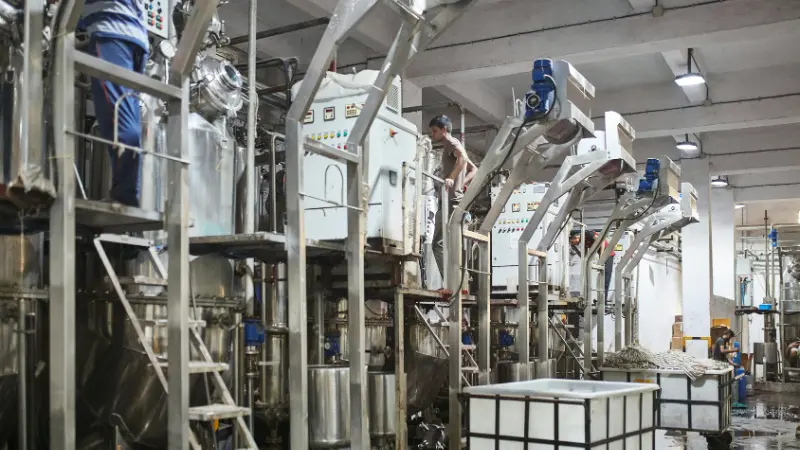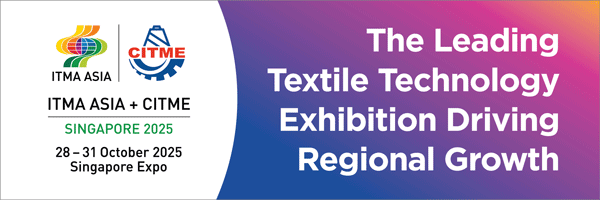Article By: Dr.N.N. MAHAPATRA / Business Head (Dyes) – Shree Pushkar Chemicals & Fertilisers Ltd.
Numerous Chinese factories that produce synthetic dyes for the textile industry were shut down for environmental inspections starting last summer. In the wake of those closures, new dyeing methods for textiles are emerging that could help save water, reduce pollutants, save energy, and protect human health.
Work is going on how textile industry suppliers can change the process that results in effluent containing high concentrations of dyes and chemicals like chromium, arsenic, copper, and zinc.
The focus in research and development (R&D) is now more and more set on new sustainable products and processes which provide assurance that the recommended products do comply with legal, voluntary and brand & retailer restricted substance list (RSL) requirements.
The biggest challenge is cost. Price competition is fierce, and profits are shrinking thanks to volatile raw material costs and rising wages. Despite public commitments by apparel brands to become more sustainable, suppliers contacted by C&EN say their customers will not buy anything that could raise the cost of a finished garment by as little as a penny.
Given that competitive landscape, here are emerging approaches with the following highlights:
Cotton pre-treatment
Cotton requires more water than other textiles for dyeing. About 200 litres of water are required to produce 1kg of fabric. Dow has developed a pre-treatment process called ECOFAST Pure that is applied before the dyeing process to produce cationic cotton.
The pre-treated cotton acquires a permanent positive charge, enabling it to have a higher affinity for negatively charged molecules such as dyes. This patented technology decreases the use of dye and water by 50 percent for cotton dyeing. ColorZen has innovated a technology for pre-treatment of raw cotton fibers using a solution comprising a wetting agent, caustic soda, and an ammonium salt. This pre-treated cotton exhibits an increased ability to retain the dye without the need of fixation chemicals, thus reducing the usage of toxic chemicals by 95 percent and water wastage by 90 percent.
ColorZen developed a cotton pre-treatment step that allows raw cotton fiber to get treated right from the field. The company’s technical director told that this process speeds up the dyeing process while using 90% less water, 75% less energy, and 90% fewer auxiliary chemicals. It also cuts out almost half the dye compared with processes that call for salts in the dye bath.
Supercritical CO2 dyeing
This result in new dyes which are, for instance, free of halogens and heavy metals in new chemical structures with very high exhaust and fixation values. This permits best available technology (BAT) dyeing processes and textile products that are compliant with today’s ecological and technical requirements. By using such ecologically driven product innovations, customers can reduce the environmental impact of their production processes by saving chemicals, water and energy.
One example with the potential to become a game-changer in the industry is supercritical CO2 dyeing. This is a new technology for sustainable dyeing without water, and no effluents. The availability of water and related input/output costs are forecast to become increasingly critical for many textile-producing countries. Compared to standard aqueous dyeing methods, the supercritical carbon dioxide process leads to strongly reduced water and energy consumption and a shorter dyeing time.
In the case of polyester, high dye fixation and good levelness can be achieved without disperse dye-formulating agents or dyeing auxiliaries. The carbon dioxide used in the process has the advantage of being non-toxic compared, for example, to solvent dyeing methods, and can also be recycled to a very high degree.
Due to these attractive green credentials, the process has been adopted by leading retailers such as Nike and Adidas for key segments of their product ranges and promotional activities. A number of bulk machinery installations are in regular operation, DyeCoo being one leading manufacturers in this area.
Currently, the technology is being established for package and beam dyeing, but it is expected that this will be developed further. There is also intensive research work ongoing for its application to a wider range of substrates.
Pre-reducing indigo
University of California researchers are developing denim dyes using genetically modified E.coli bacteria to produce indican, which can then be turned into indigo by an enzymatic treatment. This new process removes the need for harsh chemical reducing agents for indigo dye solubilization, replacing it with an enzyme. However, the process still needs optimization in the recovery of indican for its sustainability.
With improved resources, environmentally-compliant dyestuffs and a solid foundation of textile Industry expertise, Internet-based tools are developed for product selection and sustainable process optimization. Moreover, pre-reduced indigo liquid allows a cleaner denim production and shows a massive positive impact on resource efficiencies such as a substantial reduction of sodium hydrosulphite usage, much cleaner wastewater and less water usage.
Also, fast and reliable online determination of the important dyeing bath parameters like indigo concentration, reducing agent concentration, pH value, redox potential, temperature and electrolyte concentration help to optimize the dyeing process and save valuable resources.
“Synthetic indigo, used to make blue jeans blue, is an example of a dye that can release unreacted chemicals downstream of manufacturing. In response, color chemical company Archroma developed a technology for pre-reducing indigo to prevent the chemical aniline from getting through as a contaminant.
Engineered microbes
Colorifix employs a synthetic biological approach by using bacteria to color the textiles, which can reduce the use of water by up to 10 times. The innovative steps in this process are to fix the dye-producing bacteria directly onto the fabric using a carbon source solution, followed by deposition and fixation of the dye onto fabrics with a single heating cycle by the lysis of the microorganisms.
This technology doesn’t require a dye extraction process, which uses organic solvents, or fixing and reducing agents containing organic compounds.
Several startups are working on engineering microbes to reduce the use of chemicals in textile dyes. UK-based Colorfix, for example, is piloting a process where genetically modified microbes produce stable colors.
Digital textile printing
The major portion of water used for textile dyeing comes after dyeing, when fabrics, particularly cotton, have to be washed over and over again to remove unfixed dye. Instead, manufacturers can skip dyes and use pigments. Intech Digital, for instance, makes large-scale printers that use special versions of ink-jet print heads designed to work with textile inks.
During the last five years, the digital printing market has developed significantly. Innovations in the digital printer and print head technology created new demands for inks and driven the transformation into an upscale industrial digital printing production. The growth of digital textile printing application technology is another significant step towards more sustainable textile printing production.
New inks must meet the new requirements of digital textile printing companies. They need tighter drop-forming performance, longer open times, improved stress resistance, higher colour strength, improved robustness, and, of course, reliable eco-performance and high-fastness properties.
In response to the new industry standards, DyStar launched Jettex 4.0 – high-performing digital textile printing inks. Meanwhile, new ranges of ultraintense inks show print head lifetime enhancing performance and user-friendly open times for the print heads, with excellent robustness in processing. With a wide colour range of vivid, brilliant colours they are the perfect inks to create powerful fashion. All newly launched black inks pass current limits and meet the most stringent ecological and fastness requirements.
Thus far, none of the digital printing systems could fulfill the very high fastness requirements on inks in the home textiles segment. Some of these requirements include very high fastness to light (especially in pale shades), high fastness to multiple washing, and fastness to rubbing. DyStar has developed Jettex Vat, the first industrialized high-performance vat inks on the market, based on Indanthren Vat dyes.
Powder dyes from textile fibres:
Officina+39, an Italy-based company, developed the sustainable dye range Recycrom using recycled clothing, fiber material, and textile scraps. It developed a sophisticated eight-step system (patent pending) in which all the fabric fibers are crystalized into an extremely fine powder that can be used as a pigment dye for fabrics and garments made of cotton, wool, nylon, or any natural fiber.
Recycrom can be applied to the fabrics using various methods such as exhaustion dyeing, dipping, spraying, screen printing, and coating. Recycrom is applied as a suspension while most dyes are used as a chemical solution and hence can be easily filtered from water, thus reducing the environmental impact.
Hybrid pigments:
Eco foot has developed hybrid pigments composed of a dye chemically linked to a polymer particle that reacts with cellulose fibres at temperatures as low as 25ºC. This technology doesn’t require the use of salt, which otherwise is crucial to drive the dye into the fabric.
This technology can be applied for dyeing cotton garments at low temperatures and also to wool in a more ecological process. Eco-foot indigo, a hybrid pigment used in dyeing denim, avoids using toxic reducing agents that are traditionally used in converting indigo pigment to a water-soluble form. Common reducing agents are considered environmentally unfavorable, as the sulfite and sulfate generated in the dye bath can cause various problems when discharged into the wastewater.
Ecofoot also developed auxiliaries to prevent hydrolysis of the dye in the dyeing process, which typically requires harsh washing-off procedures to remove the hydrolyzed dye. Together with hybrid pigments and auxiliaries, more than 50 percent of water in the intermediate and final rinses can be saved in the total process of preparation and dyeing.
Besides these dyeing methods, other solutions are coming to the fore. Even the best pretreatment process can’t eliminate the health effects of the dyes and the chemicals used to make them. That’s the focus of many of the textile industry’s eco-certification programs. Oeko-Tex certification for certifying non-toxic textiles now looks at more than 300 chemicals up from 100 initially.
Denim makers in particular have long been under pressure to change their processes. Earlier this year, Levi’s detailed an operating model pilot called Project Future-Led Execution that cuts chemicals from the finishing process and shortens the time to market. Dutch denim maker G-Star Raw also took a hard look at their supply chain and launched what they call “the most sustainable jeans ever.”





















